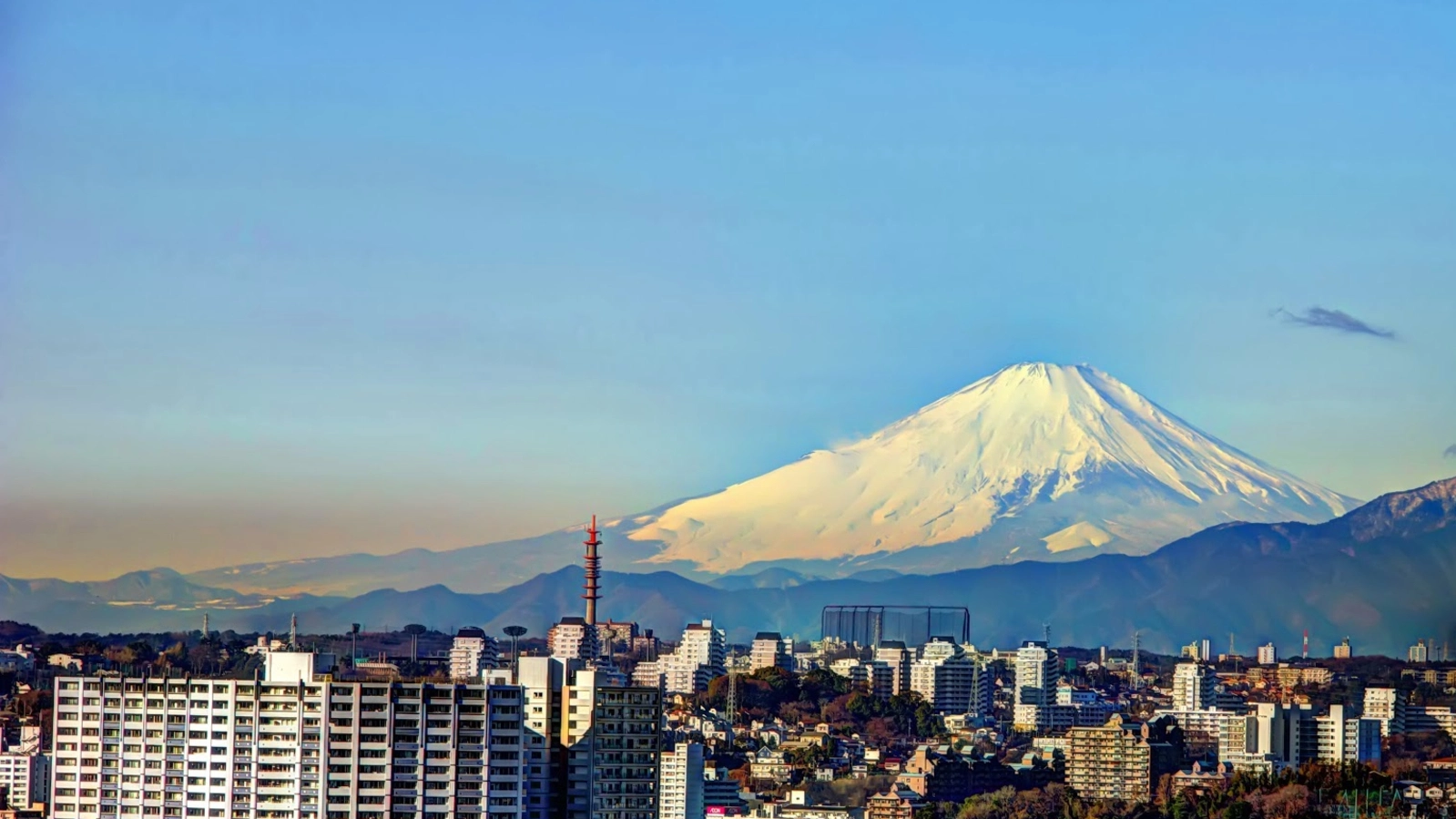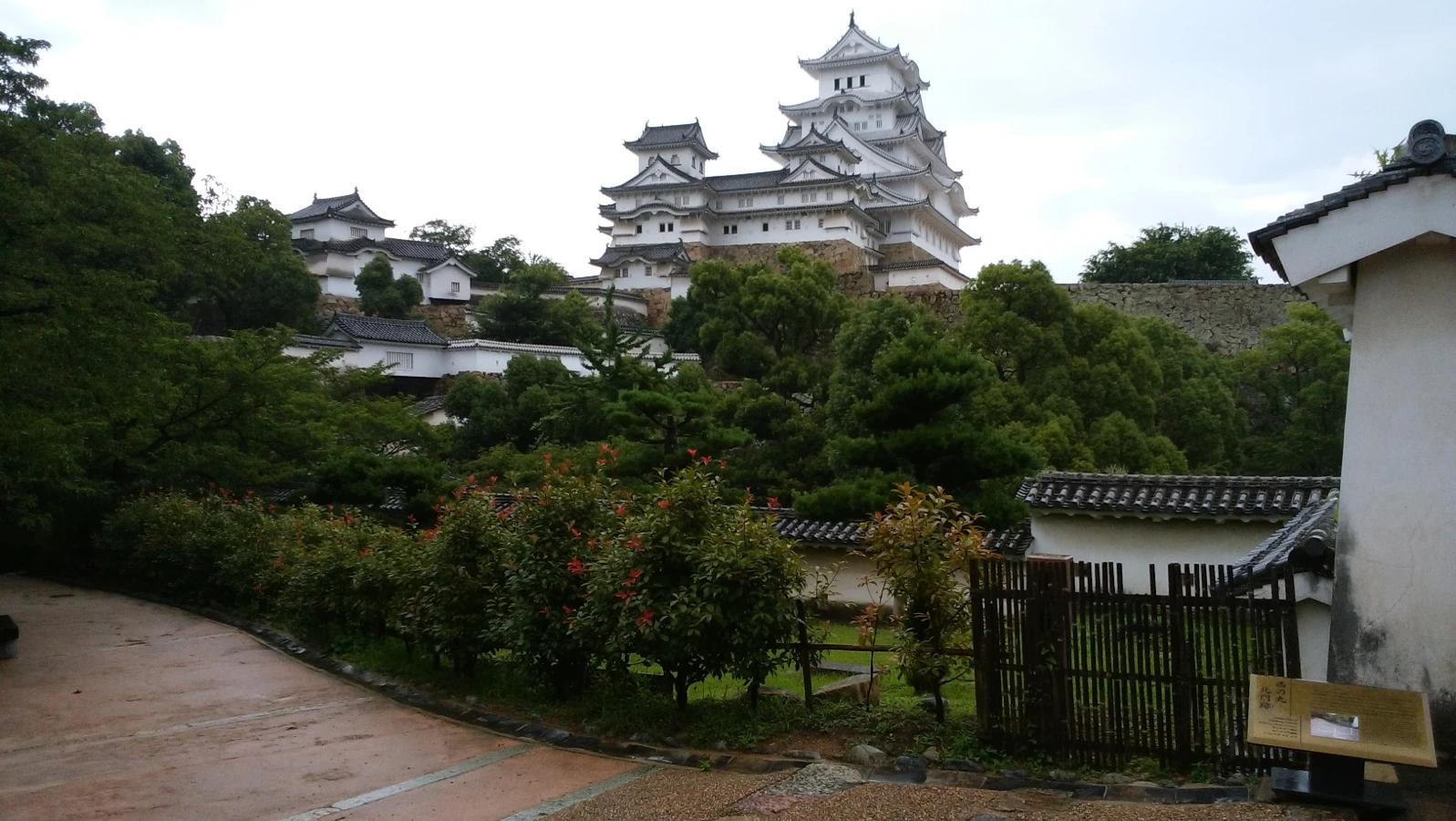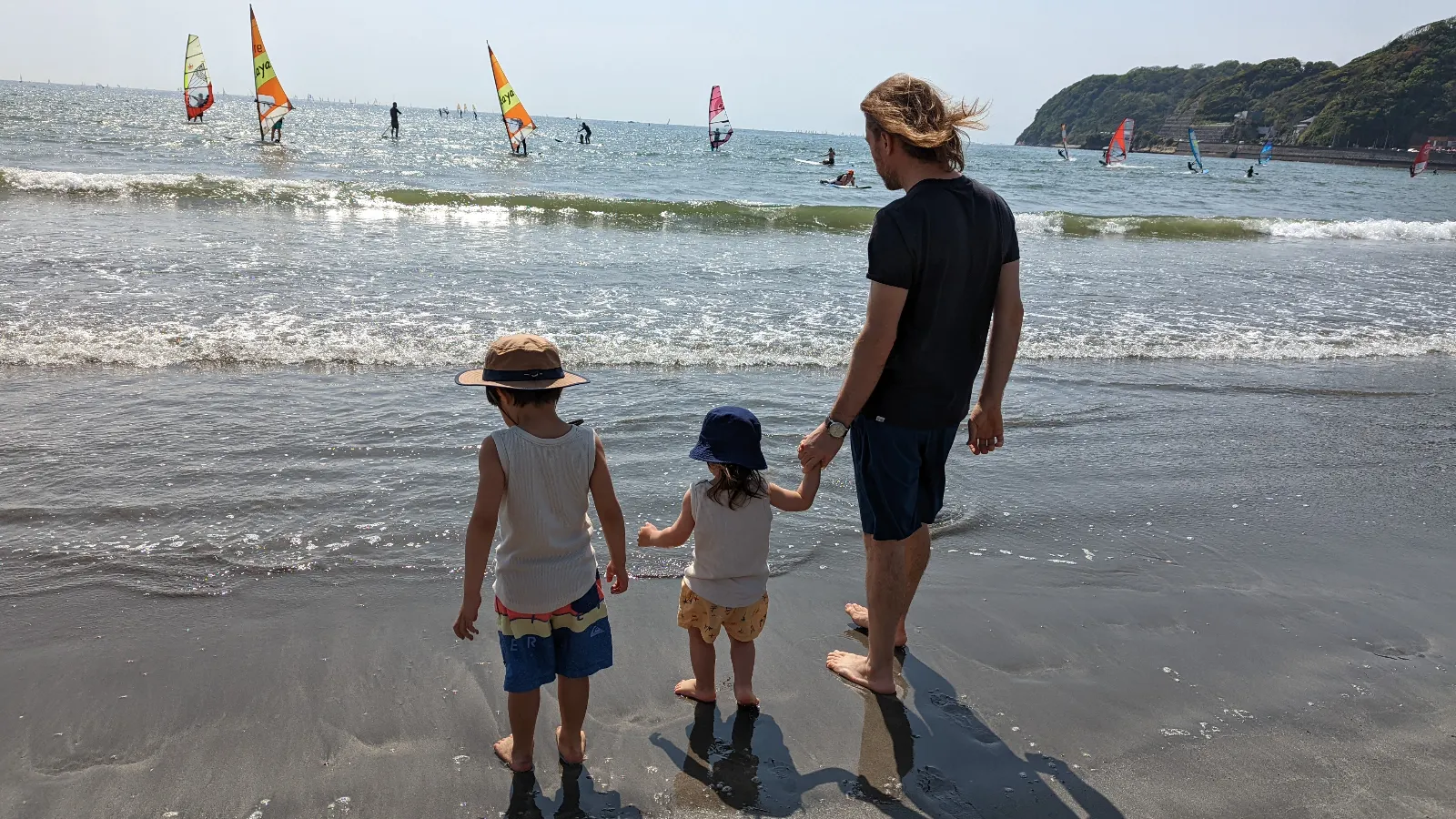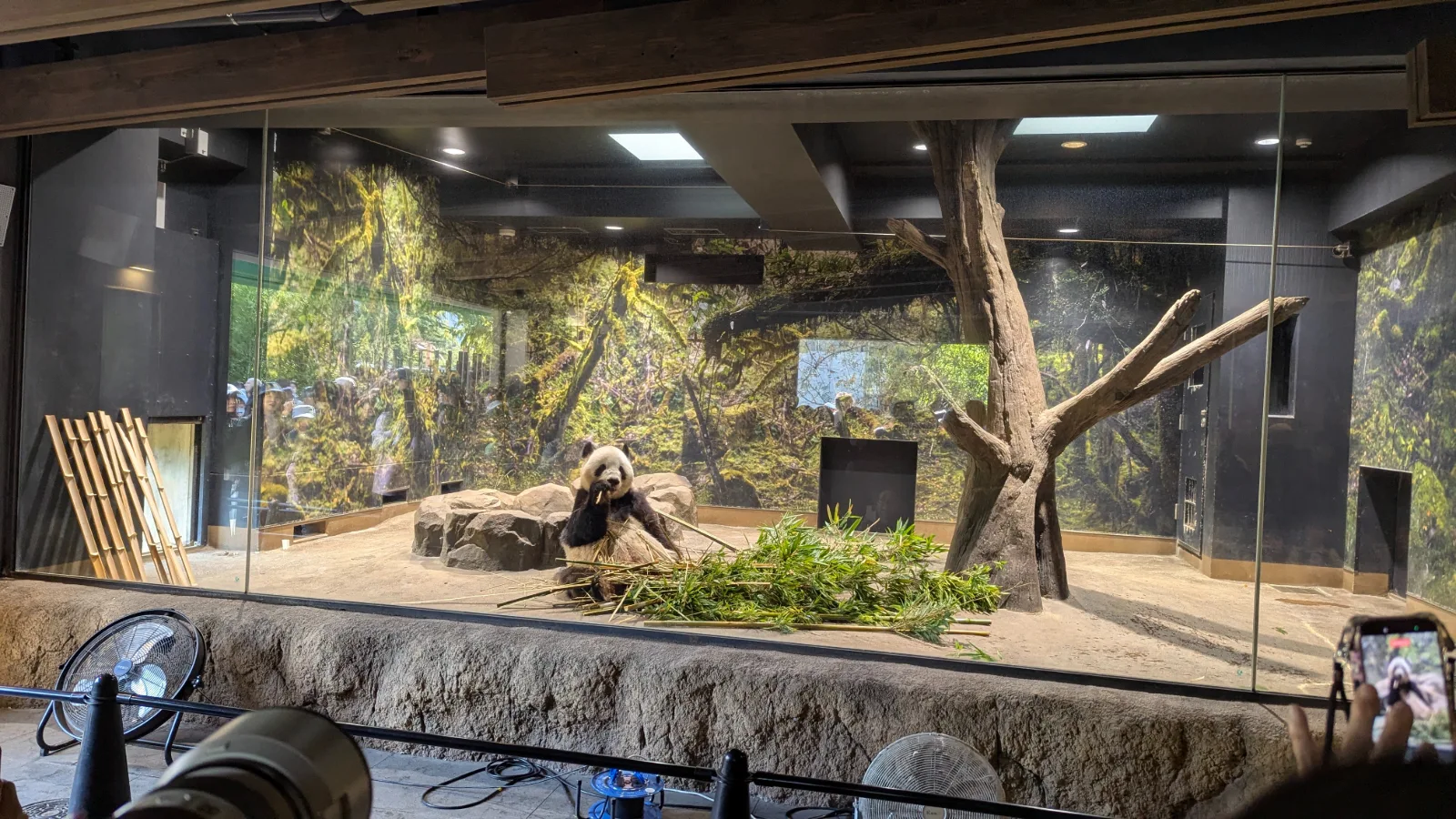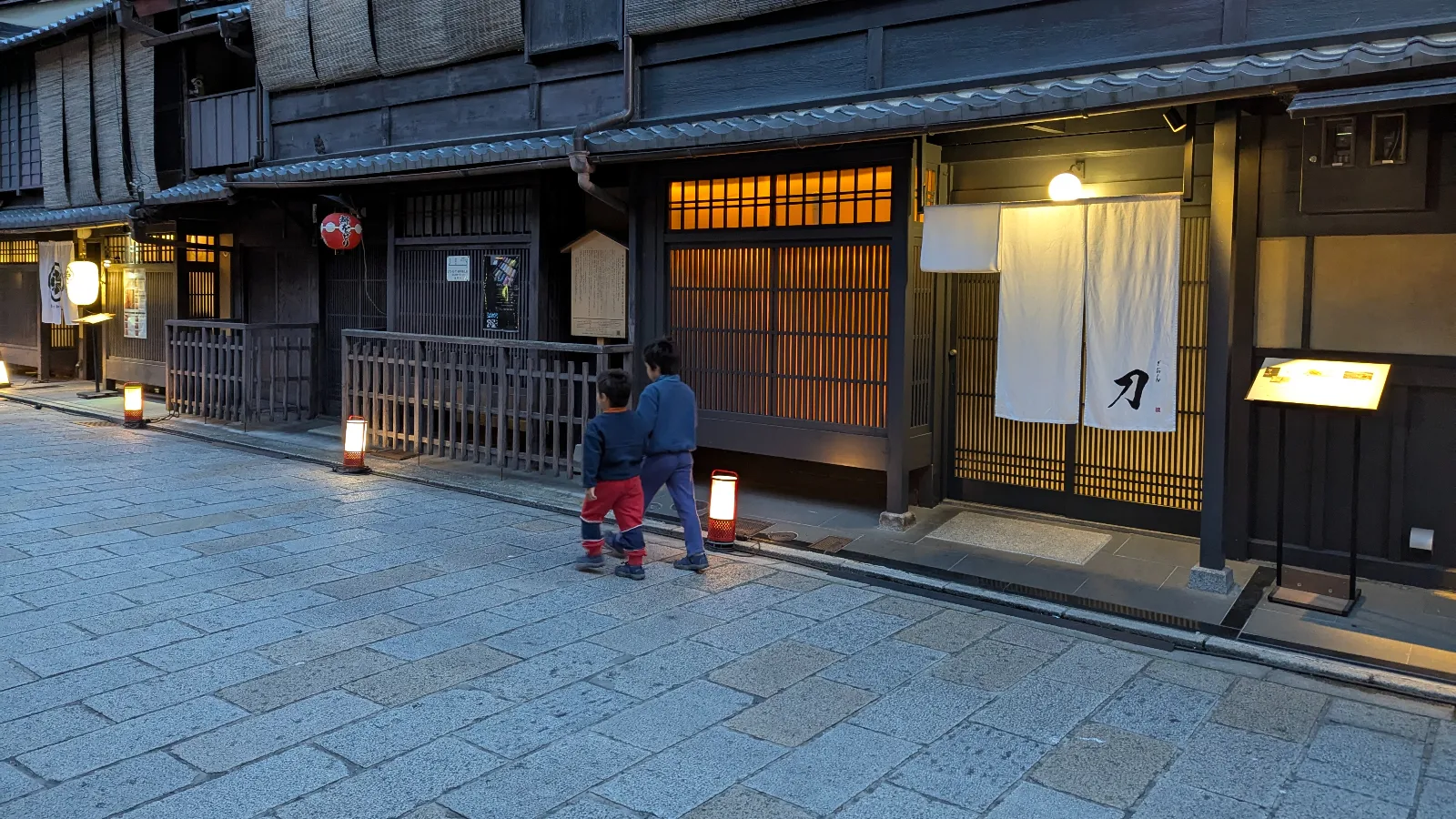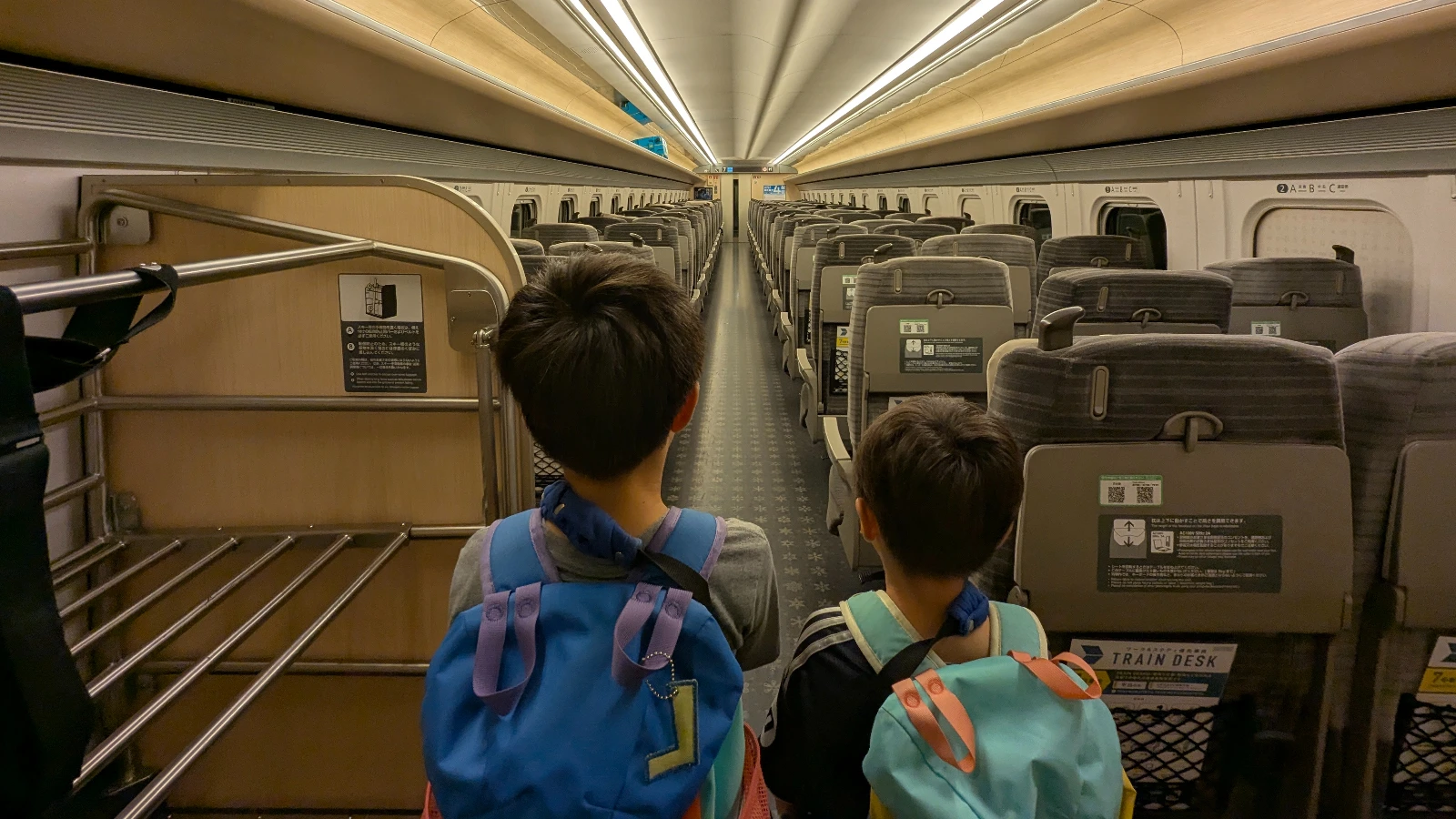
Thinking of exploring Japan by train with kids? You’re in the right place! Japan’s rail network isn’t just a way to get around, it’s part of the adventure. Whether you’re zooming across the countryside on a Shinkansen, hopping on quirky themed trains, or navigating the maze-like Tokyo subway, Japan by train is an experience your whole family will love. For families looking to save, options like the JR Rail Pass and Rail Pass Japan make long-distance travel affordable and convenient.
From spotting Mount Fuji through the window to riding a real-life Thomas the Tank Engine, traveling Japan by train turns ordinary journeys into magical moments. This ultimate family guide covers everything from using rail passes and IC cards to avoiding rush hour and finding stroller-friendly stations, plus plenty of tips to make train rides easy, fun, and unforgettable with kids.
All aboard for the smoothest, most playful ride through Japan by train!
Embarking on a Rail Trip Across Japan with Kids? Whether you’re zipping between Japan’s vibrant major cities or hopping on charming local lines, having the right guides can truly make all the difference for your family. Our comprehensive family travel guides to Tokyo, Kyoto, Osaka, Kobe, Hiroshima, Fukuoka, Nagasaki, Yokohama, and even Miyakojima (with handy tips on flying and connecting transport) are packed with kid-friendly things to do. Plus, most of these amazing experiences are easily accessible when traveling Japan by train. Want more ideas? See our full Ultimate Guide to Family Attractions in Japan with Kids for the best castles, shrines, theme parks, and more.
Disclaimer: This post contains affiliate links. If you click to purchase, it’s at no extra cost to you… when you book through our links, you help support LuNi Travels and the family guides we create!
Why Book Ahead? It’s quicker, avoids long lines, helps skip language barriers, prevents sold-out attractions, and solves payment issues at places that don’t accept credit cards. *Prices are subject to change.
1. Get an IC Card for Easy Train Travel in Japan
Want to make train travel in Japan as easy as a single tap? IC cards (like Suica, Pasmo, and ICOCA) are contactless smart cards that let you tap and go on trains, subways, buses, and even convenience stores and vending machines! No more fumbling for paper tickets or struggling with fare calculations, just tap, ride, and explore! Getting an IC card is one of the easiest ways to simplify train travel in Japan with kids, especially when hopping between cities or using subways daily.
Why Families Will Love IC Cards:
- Super Convenient: No need to buy separate tickets every time you ride.
- Works Everywhere: Valid on trains, subways, buses, and even at shops and vending machines.
- Kid-Friendly: Discounted child IC cards are available for kids aged 6-11. Even better? Kids under 6 ride free with a paying adult!
- Fun Designs! Look for special-edition IC cards featuring Pokémon, Hello Kitty, or other cute characters, perfect for little travelers!
Where to Buy an IC Card in Japan:
- Airport Train Stations: Narita, Haneda, Kansai, and other major airports sell them.
- Major Train Stations: Tokyo, Kyoto, Osaka, and other key transport hubs have IC card vending machines.
- Convenience Stores: Some shops like 7-Eleven sell preloaded IC cards.
- Online: Buy your card here.
Pro Tip for Parents: IC cards can be reloaded at ticket machines in any station. Just look for the “Charge” (チャージ) option!
Bonus Fun: Some train stations sell limited-edition IC cards with Pokémon, Hello Kitty, or other fun designs! Try to collect them as souvenirs from your trip!
Luca & Nico’s Tip: Kids 6-11 can get a special discounted child IC card! Just ask at the station counter and show their passport if needed. Children under 6 ride free, so if you’re traveling with toddlers, you won’t need to buy them a card at all!
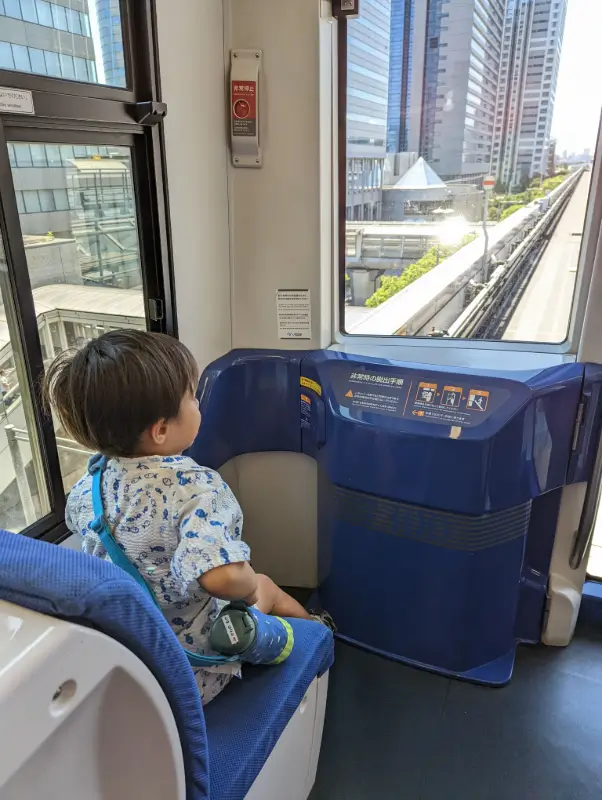
2. Avoid Rush Hour on Trains with Kids in Japan
Warning: Rush hour in Japan is NO JOKE! Picture a train so full that station attendants have to push passengers inside so the doors can close! While this is an everyday experience for local commuters, it can be overwhelming for kids (and parents!).
Rush Hour Times to Avoid:
- Morning Rush: 7:30 AM – 9:30 AM (Office workers heading to work)
- Evening Rush: 5:00 PM – 7:30 PM (Workers heading home)
Best Times for Families to Travel:
- Mid-Morning (9:30 AM – 11:30 AM) – Perfect for sightseeing and fewer crowds.
- Early Afternoon (1:30 PM – 4:30 PM) – Less busy, great for getting around with kids.
- Late Evening (after 8:00 PM) – Trains are quieter, but keep in mind that kids may be tired.
Women & Children-Only Cars
Some commuter trains in Japan have “Women & Children Only” cars during rush hour to create a safer and more comfortable environment for female passengers. These are a great option for moms traveling with kids, but sorry, dads can’t enter!
How to Spot These Cars:
- Look for pink signs on the platform and train doors.
- Available on some JR, Tokyo Metro, and Osaka Metro lines (rush hours only).
Pro Tip for Parents: If a train is too packed, wait for the next one! Trains in Japan run super frequently, sometimes every 2-3 minutes in cities like Tokyo. It’s better to wait for a slightly emptier train than to struggle in a packed one with kids.
Bonus Hack: If you’re taking a Shinkansen (bullet train), reserve your seats in advance to avoid getting stuck in non-reserved cars, which can be full during peak travel times.
Luca & Nico’s Tip: If you have to travel during rush hour, stand at the front or back of the train, as these cars tend to be less crowded. Also, keep little hands holding onto a parent or a train handle, it can get bumpy when the train stops suddenly!
3. Plan the Perfect Train Routes Around Japan with Kids
Japan’s train network is HUGE, with over 30,000 km of railway tracks and hundreds of train lines. At first glance, it might feel like an impossible puzzle, but don’t worry! With the right apps and tools, you’ll be navigating like a local in no time. If you’re planning your Japan trip on a budget, our Japan Budget Family Travel Guide shares tips on saving with rail passes, food, and attractions. For year-round planning, explore our Japan Seasonal Guides for Families, including detailed resources for spring, summer, autumn, winter, and our full Best Time to Visit Japan with Kids guide.
Best Train Apps for Families
These apps make train travel easy and stress-free:
- Google Maps – Best for quick directions, train times, and exit info.
- Japan Travel by Navitime – Great for detailed train routes, ticket prices, and transit maps.
- Jorudan – Helpful for comparing train fares and travel times.
- Tokyo Subway Navigation – A must-have if you’re staying in Tokyo!
Should You Get a JR Pass or Regional Rail Pass?
If you’re traveling outside Tokyo, a JR Pass or a regional rail pass could save you tons of money on long-distance trains. But how do you know which one is right for your itinerary?
For a family-friendly breakdown of when to use the full JR Pass vs a regional option, don’t miss our detailed Japan Rail Pass for Families guide, it compares all major pass types and helps you make the smartest choice based on your route and travel pace with kids.
Types of Rail Passes:
- Japan Rail (JR) Pass – Best for multiple Shinkansen (bullet train) trips across Japan. Purchase here.
- Kansai Area Pass – Great for Kyoto, Osaka, Nara, and Kobe travel. Buy here.
- Hokkaido Rail Pass – Perfect for exploring Japan’s northernmost island. Purchase here.
- Tokyo Wide Pass – Includes Nikko, Mount Fuji, and other great day trips! Buy here.
Bonus Hack: These passes must be purchased before arriving in Japan in most cases, so check online before your trip!
Luca & Nico’s Tip: Before heading out, Papa always screenshots our train routes so we don’t panic if Wi-Fi disappears. It’s a lifesaver when we’re in a rush or underground!
4. Find Elevators and Stroller-Friendly Exits in Train Stations
If you’ve ever tried to carry a stroller, luggage, or sleepy toddlers up a never-ending staircase in a busy Japanese train station, you know how important elevators are! Some stations are massive, with multiple underground levels, so knowing where the elevators are can save time and energy.
How to Find Elevators in Japanese Train Stations:
- Look for the wheelchair symbol – Elevators are marked with blue wheelchair signs and are usually near ticket gates or platforms.
- Follow overhead signs – Most stations have clear English signs pointing to elevators.
- Check the station map online before arrival – Huge stations like Shinjuku, Tokyo Station, and Osaka Station have multiple exits, and choosing the wrong one can mean a long detour with kids in tow!
- Ask a station staff member – If you’re lost, the friendly station workers can help!
Avoid These Stations if You Have Heavy Bags or a Stroller:
Some older train and subway stations don’t have elevators or require long walks between connections. If you’re traveling with a stroller or heavy luggage, try to avoid these tricky stations:
- Shinjuku Station (Tokyo) – One of the world’s busiest stations, with tons of stairs and confusing exits.
- Shibuya Station (Tokyo) – The station is under constant renovation, making navigation tricky.
- Umeda Station (Osaka) – Huge and maze-like with limited elevators near some platforms.
- Kamakura Station – A beautiful city, but limited accessibility at many stations.
Better Alternatives: If you’re traveling with kids, strollers, or luggage, Shinagawa Station in Tokyo and Kyoto Station are much easier to navigate than some of the more chaotic stations!
Luca & Nico’s Tip: If you can’t find an elevator, ask a station worker! They might even take you through a secret passage that only staff can access, just like a real ninja shortcut!
5. Teach Train Safety Before You Ride in Japan
Japan’s trains are fast, efficient, and super safe, but busy stations and crowded platforms mean it’s important to teach kids train safety before they board!
The earlier kids learn train rules, the easier (and safer) your family’s journey will be!
Essential Train Safety Rules for Kids
- Stay Behind the Yellow Line – Platforms have a bright yellow tactile strip marking the safe zone. Always stay behind the line until the train stops completely.
- Hold Hands in Crowded Areas – Stations can be packed with people, especially during rush hour. Make sure little hands are held tight to avoid getting separated.
- Let People Exit First – In Japan, passengers exit before new ones board. Wait patiently at the side of the doors instead of rushing in.
- Watch for Closing Doors! – Trains don’t wait! Japanese trains run on a strict schedule, and the doors close quickly, so don’t try to jump on last second!
- Never Run on the Platform – Trains come every few minutes, so there’s no need to rush. Running on platforms is dangerous and can cause accidents.
Extra Safety Tips for Parents
- Teach Kids to Recognize Train Staff Uniforms – If they get separated, they should look for a train station worker (駅員 – ekiin) in a navy blue uniform.
- Take a Family Photo Before Heading Out – If a child gets lost, showing a recent photo to station staff will help them locate your child faster.
- For Toddlers, Use a Backpack Harness in Crowded Areas – Japan’s busiest stations can be overwhelming, and a small backpack harness can help keep little ones close and safe.
Luca & Nico’s Tip: Turn train safety into a fun game! Before your trip, practice “train station pretend” at home:
Game Idea:
- Pretend to stand in a line behind the “yellow line” (use a tape on the floor!).
- Practice waiting for passengers to exit before “boarding” the couch (your train!).
- Time how long kids can stand still like statues, just like waiting on a platform!
Wondering Which Train Pass is Best for Your Family’s Route? We’ve been there, with so many train pass options in Japan, from the Japan Rail Pass to various subway and regional passes, it can get confusing fast! That’s why we’ve created simple, family-focused guides to help you decide with ease. Compare the Japan Rail Pass vs Regional Passes, for your long-distance adventures, or explore local options with the Tokyo Subway Ticket vs JR Tokyo Wide Pass, and the Fukuoka Tourist City Pass vs Subway Pass. The perfect pass for your family depends on where you’re going, how fast you’re traveling, and what makes the most sense with kids in tow.
6. Where to Stand on Japanese Trains with Kids
Finding the right spot to stand on a crowded train can make boarding and exiting stress-free, especially when traveling with strollers, suitcases, or tired little ones. The best place? Near the doors, but with enough space for others to pass!
Where to Stand?
- Near the doors – Easier to hop off, especially for quick stops.
- Against the side panels – Avoids blocking the entryway.
- Near priority seats – These seats are reserved for elderly, disabled passengers, and families with small children, so they’re a good spot to stand if you might need a seat.
What Not to Do on the Train
- Don’t block the doors! Japanese train doors open and close fast, if you’re in the way, it can cause delays.
- Don’t lean on the poles – People need them for balance!
- Don’t spread out with bags – Keep luggage against the side of the train car to avoid taking up space.
Luca & Nico’s Tip: Always keep an eye on the station names so you don’t miss your stop! Some trains have digital screens showing station names in English, but if you’re on a local line, listen carefully for announcements!
7. How to Use Priority Seats and Find the Best Family Spots
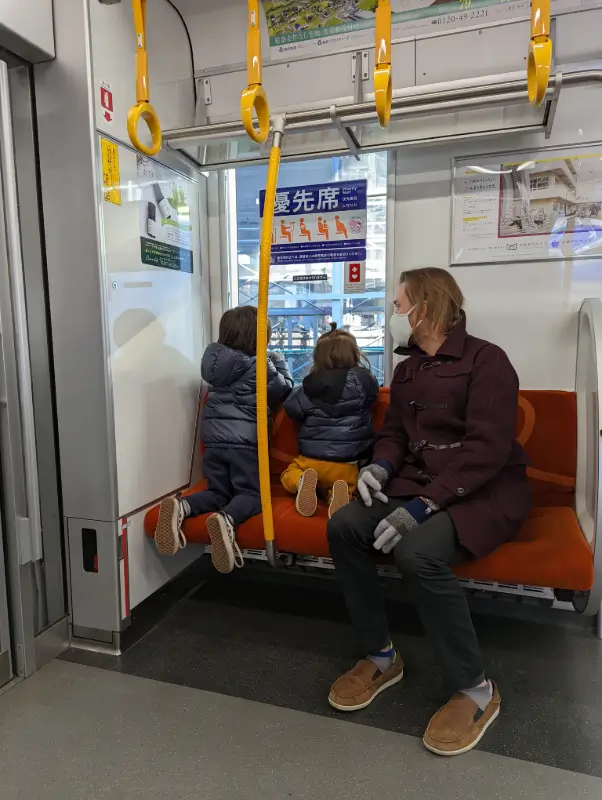
One of the best things about Japanese trains is their priority seating, special seats reserved for:
- Families with small children
- Pregnant women
- Elderly passengers
- People with disabilities or injuries
These seats are usually found at the ends of each train car and marked with colorful signs. If they’re free, you can sit there, but if someone in need arrives, it’s polite to give up your seat right away!
How to Use Priority Seats (Without Breaking the Rules!)
- Yes, you CAN sit if they’re empty! If no one in need is using them, families can take a break.
- Be alert! If someone who needs the seat gets on, offer it immediately.
- Don’t use your phone near priority seats. In some trains, using mobile phones near these seats is discouraged because it can interfere with medical devices like pacemakers.
Best Seats for Families
- Shinkansen (Bullet Trains): If traveling with babies or toddlers, book seats at the end of the car, there’s extra space for strollers and luggage!
- Commuter Trains: If priority seats are full, look for empty bench seats near the doors, they’re easiest for hopping off quickly with kids.
Luca & Nico’s Tip: Mama always tells us to offer our seat if someone needs it more. It makes people smile, and sometimes they even say “ありがとう” (Arigato, thank you)!
8. Quiet Entertainment Ideas for Long Train Rides
Long train rides in Japan can be exciting at first, but let’s be honest, kids get restless! To keep them happy and entertained, pack a few quiet activities that won’t disturb other passengers.
Best Travel-Friendly Activities for Kids on Japanese Trains
- Sticker books & activity pads – Lightweight, no mess, and available at 100-yen stores like Daiso!
- Magnetic puzzles & travel games – Perfect for keeping pieces in place!
- Audiobooks or podcasts – Load up on kid-friendly stories for a quiet distraction.
- Window-watching challenges – Play “I Spy” with scenery outside the train!
- Train-themed coloring pages – Let kids draw bullet trains or sketch what they see from their seats!
- Origami fun – Buy a small pack of origami paper and fold cranes, frogs, or lucky stars!
Parent Hacks for Long Train Rides
- Heading to a big station like Tokyo Station? Watching trains arrive and depart can be surprisingly fun for kids!
- On a Shinkansen (bullet train)? Bring bento boxes from the station, eating an ekiben (train bento) is a big part of the experience!
- Noise Tip: Japan’s trains are quiet spaces, avoid loud games or videos. If using a tablet, bring kid-friendly headphones!
Luca & Nico’s Tip: We love drawing pictures of the landscapes outside the train and making a Japan Train Adventure Scrapbook! Try sketching Mount Fuji, rice fields, or even fun station signs!

9. Mastering Japanese Train Etiquette with Kids
Japanese trains are amazingly clean, quiet, and efficient, and that’s because everyone follows train etiquette! Unlike some countries where trains are loud and lively, in Japan, the rules are all about respect for fellow passengers.
Essential Japanese Train Etiquette Rules
- Use Your “Indoor Voice” – Loud conversations, laughing, and phone calls are a big no-no on Japanese trains. Keep voices low and use headphones for videos or music.
- No Phone Calls! – If you must take a call, wait until you get off or go to the small spaces near Shinkansen doors.
- No Messy or Smelly Food – While you can eat on Shinkansen and long-distance trains, it’s considered rude to eat messy or strong-smelling food on regular commuter trains.
- Don’t Take Up Extra Space – Keep bags on your lap or the overhead rack, not on the seat next to you!
- Respect Priority Seating – Even if priority seats are empty, be ready to give them up for elderly passengers, pregnant women, or families with small children.
- Let People Exit First – Stand to the side of the doors and let people off before boarding, this keeps everything moving smoothly!
Train Manners for Kids
- Practice “train voices” before the trip! If your kids get excited easily, do a pretend train ride at home where they practice talking quietly.
- For toddlers, bring soft toys – Avoid noisy or musical toys that might disturb others.
- Teach the “no running” rule – Kids shouldn’t run or play inside the train cars.
Luca & Nico’s Tip: We play “Secret Whisper Mode” on trains, who can whisper the longest? Nico always loses because he forgets after a few minutes!
10. Know Your Exit Before You Board: Train Station Navigation Tips
Japanese train stations aren’t just train stations, some are huge underground cities with multiple exits, endless hallways, and hidden passageways. If you take the wrong exit, you might end up blocks away from your destination!
How to Find the Right Exit Every Time
- Check Google Maps Before Arriving – Search for your destination and find the nearest station exit number (e.g., Shibuya Station, Exit 2).
- Look for Station Maps – Many stations have maps near ticket gates showing which exits lead where.
- Follow the Numbered Exits – Exits are usually numbered and labeled in English, follow signs to the correct one!
- Use Station Apps – Apps like Japan Travel by Navitime and Google Maps often tell you which exit to take for major landmarks.
- Ask a Station Staff Member – If you’re lost, station workers are always happy to help!
Big Stations to Watch Out For!
These stations are HUGE and confusing, plan your exit before arrival to save time!
- Shinjuku Station (Tokyo) – One of the busiest stations in the world with over 200 exits!
- Shibuya Station (Tokyo) – Always under construction, exits change frequently.
- Tokyo Station – Large underground passageways, some exits lead to different districts!
- Osaka Station/Umeda – A maze of connections between JR, subway, and private rail lines.
Parent Hack: If you’re totally lost, follow the signs for the nearest taxi stand, they often lead to the main exit!
Luca & Nico’s Tip: We turn finding the right exit into a game, who can count the fewest steps from the platform to the street?
Searching for Family-Friendly Places to Stay in Japan? Discover your family’s home away from home in Japan! Explore our curated Hotel Guides for Tokyo, Kyoto, Osaka, Kobe, and Fukuoka, all thoughtfully packed with parent-approved places conveniently located near top attractions that kids will love. For a full overview of family-friendly hotels across Japan, don’t miss our Ultimate Guide to Family Hotels in Japan.
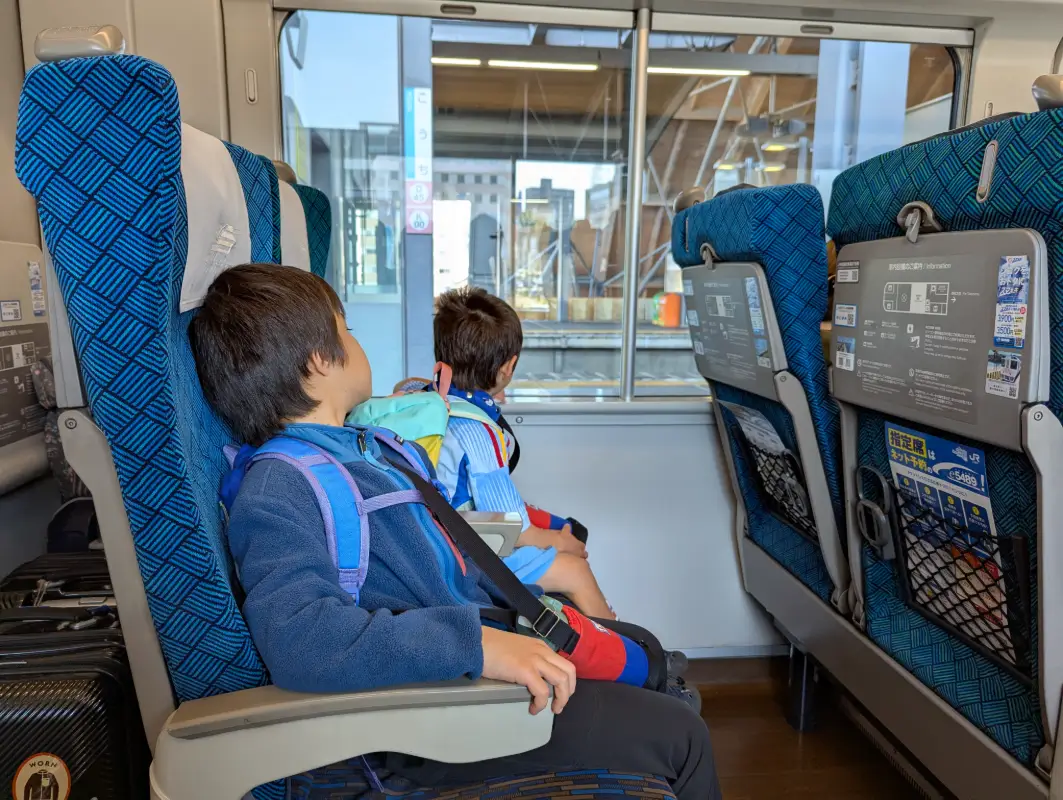
FAQs: Everything Parents Ask About Japan by Train with Kids
Parents traveling in Japan often have tons of questions about navigating the train system with little ones. Here are some of the most frequently asked questions to help you feel prepared!
A: Kids under 6 ride free on Japanese trains when accompanied by a paying adult, though they may need to sit on your lap if the train is full. Children ages 6–11 pay half fare, and kids 12 and up pay the full adult price. If using an IC card, request a child version at a staffed counter.
A: Children ages 6–11 can use discounted IC cards such as a child Suica or Pasmo. To get one, visit a JR ticket counter with your child present for age verification. Kids under 6 ride free with an adult, so they don’t need their own IC card.
A: Yes, strollers are allowed on all trains in Japan. Most cars have open spaces near the doors, and many stations have elevators for easy access. For comfort, avoid rush hours and board at the front or back of the train, where there’s usually more space.
A: Major stations in Japan like Tokyo, Kyoto, and Osaka are mostly stroller-friendly, with elevators, wide gates, and family restrooms. Smaller or older stations may only have stairs, so it’s best to check accessibility on Google Maps before traveling with young children.
A: The most fun trains in Japan for kids include the Shinkansen (bullet train) for its speed and onboard bento boxes, the Hello Kitty Shinkansen (Osaka–Fukuoka), Tokyo’s Yamanote Line loop past top sights, and the seasonal Thomas the Tank Engine Train in Shizuoka.
A: Yes, eating is allowed on Shinkansen and long-distance trains, where families often enjoy bento boxes. On commuter trains, eating is discouraged, especially during rush hour. Stick to small, tidy snacks and avoid messy or strong-smelling foods.
A: Yes, Shinkansen and many limited express trains have clean restrooms, often with changing tables. Major stations also provide baby rooms, nursing spaces, and family bathrooms, making travel easier for parents with infants or toddlers.
A: If you miss your train in Japan, go to the nearest station staff counter. For reserved seats, staff can usually rebook you on the next train. If you’re using an IC card, simply exit the gate and re-enter when ready, there’s no penalty for missing a train.
A: If a child gets lost, tell them to find a station staff member in a navy blue uniform and cap. Parents should take a daily photo of their child’s outfit and teach them to say “Eigo onegai shimasu” (English, please) so staff can quickly assist.
A: Yes, Japanese trains are safe, punctual, and family-friendly. Many families and school groups travel by train daily. With clean stations, clear signage, and reliable staff, trains are one of the easiest and safest ways to explore Japan with kids.
A: At major stations like Tokyo, Kyoto, and Shin-Osaka, look for accessibility signs directing to elevators, wide ticket gates, and family restrooms. You can also use Google Maps station view to plan stroller-friendly routes before arriving.
Luca & Nico’s Tip! Some Shinkansen trains have special observation windows at the front, ask a staff member if your kids can take a peek!
Until Next Time…
Train travel in Japan with kids isn’t just a way to get around, it’s part of the fun! Whether you’re riding a Shinkansen at top speed, spotting Hello Kitty trains, or just watching the city lights flash by, there’s something magical about Japan’s railway system.
With these family-friendly train tips, you’re ready to navigate stations like a pro, enjoy stress-free travel with kids, and make incredible memories along the way!
Where will your next train adventure take you?
Stay curious, stay adventurous, and keep dreaming!
~ The LuNi Travels Family ~
Planning your route? Let our city guides help you decide where to stop next.
From bullet train adventures to neon-lit food hunts, our Family Travel Guides pair perfectly with your rail pass. Discover the most kid-friendly cities in Japan, with practical tips, playful missions, and stress-free travel advice along the way:
- Tokyo with Kids — explore Japan’s biggest city through theme parks, samurai stories, and robot cafes
- Kyoto with Kids — climb temple stairs, find ninja paths, and discover where the golden dragon hides
- Osaka with Kids — street food missions, castle quests, and a day with Mario at Universal Studios
- Kobe with Kids — ropeways, panda spotting, and seaside views with a touch of city sparkle
- Hiroshima with Kids — peaceful reflections, island deer, and a ferry ride to a floating shrine
- Fukuoka with Kids — ramen hunts, seaside parks, and the friendliest city vibes in Kyushu
- Nagasaki with Kids — lantern puzzles, penguin navigation, and clues hidden in ancient bridges
- Yokohama with Kids — cup noodle labs, giant Ferris wheels, and science-packed seaside fun
- Miyako Island with Kids — coral reefs, beach treasure hunts, and tropical island adventures

